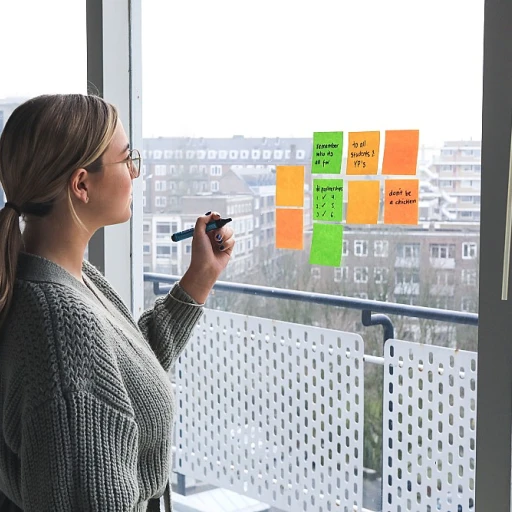
Understanding the Need for Virtual Team Building in Indian Companies
Recognizing the Shift to Virtual Environments
The rapid adoption of remote work has redefined how teams in Indian companies operate. Virtual settings necessitate a different approach to fostering team cohesion. Given the diverse cultural landscape of India, understanding the nuances of collaboration in virtual spaces is paramount. As more companies transition to remote models, the role of virtual team building becomes crucial for maintaining workplace harmony.
Adapting to New Work Dynamics
In the context of Indian companies, virtual team building activities are instrumental in bridging geographical and cultural gaps among team members. Online platforms allow for innovative interactions where team members engage in fun activities, such as virtual icebreakers and escape room challenges, facilitating a sense of camaraderie. These activities are more than just games—they serve as vital tools to establish connections and goodwill within remote teams.
Relevance of Team Building in Today's Work Culture
Working remotely can lead to feelings of isolation, which directly impacts team morale and productivity. By introducing engaging online team building activities, companies are able to create a lively virtual work environment. Events such as team meetings transform into interactive experiences rather than mere obligations. Involving teams in regular virtual events helps sustain motivation and fosters positive relationships within the workplace.
Addressing Diverse Team Needs
Each virtual team possesses unique dynamics, and recognizing these can lead to more effective team building strategies. It's essential to tailor activities to suit the specific context of the team members involved. Remote teams benefit greatly from virtual meetings that emphasize participation and interaction, using technological tools designed for seamless real-time communication. This approach not only enhances team cohesion but also aligns with the ongoing evolution in corporate communication practices, as highlighted in the navigation through evolving communication landscapes in Indian companies.
Cultural Sensitivity in Virtual Team Building
Embracing Cultural Nuances for Effective Virtual Events
In a diverse country like India, cultural awareness plays a significant role in the success of any team building effort, especially in a virtual setting. Remote teams often comprise individuals from various backgrounds, and understanding these cultural nuances is key to engaging team members effectively. It's more than just realizing that a public holiday might be celebrated nationwide; it's about acknowledging and respecting traditions, customs, and even language diversity during virtual meetings.
The importance of cultural sensitivity in a virtual work environment can’t be overlooked. It influences team dynamics and, when managed properly, can lead to a stronger connection among team members. There are several ways that Indian businesses can incorporate cultural elements into virtual team events:
- Culturally Themed Activities: Organizing events such as a virtual Bollywood trivia or a Rangoli art competition can be an exciting way to bring team members together while celebrating local traditions.
- Language Inclusion: Where possible, incorporating multi-language options during virtual meetings or using regional terms in ice breakers can make the experience more inclusive.
- Cultural Awareness Sessions: Hosting sessions that educate members about each other's cultures can pave the way for mutual respect and stronger team bonds.
While these practices are valuable, it's also imperative to align them with technological advancements to ensure seamless execution during online gatherings. For more insights into improving communication in diverse working environments, consider exploring strategies for enhancing email communication among team members.
Ultimately, cultural sensitivity is not just about avoiding missteps; it's about truly engaging your team to foster a collaborative and harmonious virtual atmosphere. As we explore further strategies, remember the importance of blending cultural awareness with practical team building activities.
Effective Virtual Team Building Strategies
Fostering Connection Through Engaging Activities
In the realm of virtual teams, organizing effective team-building activities is a powerful way to bring team members closer, irrespective of their physical location. Selecting the right activities is crucial, as they need to resonate well with your remote teams. Here’s how you can make virtual team building truly impactful:- Virtual Icebreakers: Kickoff meetings with engaging virtual icebreakers. These activities are designed to lower barriers and help team members get to know each other in a relaxed manner. Simple online games like 'Two Truths and a Lie' can set a light and enjoyable tone for remote work.
- Real-Time Online Games: Integrate real-time games into your virtual team events. Games like virtual trivia or online escape rooms stimulate collaboration and allow team members to have fun while strengthening teamwork. Such activities require members to communicate effectively, embodying the essence of building trust and cooperation.
- Structured Virtual Meetings with Activities: Design your virtual meetings to include brief, structured team-building exercises. You might involve short story-telling sessions where team members share personal anecdotes that help build connections beyond work-related topics.
Technological Tools for Seamless Virtual Interaction
Leveraging Technology for Enhanced Virtual Interactions
In our increasingly digital workspace, embracing the right technological tools can significantly amplify the effectiveness of virtual team building activities. For remote teams, the plethora of available platforms offers numerous opportunities to innovate and keep engagement levels high.- Video Conferencing Tools: Tools like Zoom and Microsoft Teams have become staples in virtual interactions, allowing for seamless communication. They provide a platform not only for formal virtual meetings but also for informal activities like virtual icebreakers and themed game nights, bringing team members closer together.
- Collaborative Platforms: Platforms such as Slack and Trello serve beyond being just project management tools. They enable real-time communication and allow members to participate in virtual building activity scenarios, like scavenger hunts or trivia games, enhancing team cohesion.
- Online Game Platforms: Utilizing platforms designed for team games, such as Jackbox Games or virtual escape room providers, injects a sense of fun into work. By organizing virtual team events that are play-oriented, teams can defuse work stress and foster camaraderie.
Measuring the Impact of Virtual Team Building
Evaluating the Effectiveness of Remote Engagement
Measuring the impact of virtual team building activities is crucial to understand their effectiveness and make necessary adjustments. It involves assessing whether the activities are achieving their intended goals such as improving communication, enhancing trust, and fostering a sense of camaraderie among team members.- Feedback Surveys: After conducting a virtual team building event, gather feedback from participants through surveys. Ask questions related to the enjoyment level, the content's relevance, and whether it helped them connect better with their colleagues.
- Productivity Metrics: Analyze productivity before and after the activities. An improvement in work outputs might indicate a successful team building initiative. Look at metrics like project completion rates, quality of work, and enhanced collaboration in remote work settings.
- Behavioral Changes: Observe any changes in team dynamics during regular virtual meetings. Are team members more interactive and engaged? Do they willingly participate in discussions and virtual icebreakers? Positive behavioral changes can signify success.
- Use of Tools: Monitor the usage of technological tools adopted for these activities. High engagement with these tools, such as video conferencing platforms, virtual icebreakers, or online team games, can indicate their acceptance and effectiveness.
- Team Cohesion: Consider setting up fun, low-risk online games or escape room challenges as regular ice breakers. Observe if these activities are helping remote teams to interact more comfortably and efficiently over time. This building activity can also be an informal way to assess team cohesion.
Overcoming Challenges in Virtual Team Building
Adapting to Unique Dynamics
Navigating the world of virtual team building can be intricate, with remote teams spread across different locations and time zones. While the flexibility of online interactions allows for unique opportunities, there are also challenges that need to be overcome to ensure successful team cohesion.
Ensuring Active Participation
One key obstacle is fostering active participation in virtual meetings. Without the physical presence of an office environment, team members might feel disconnected. Encouraging engagement through fun online activities and virtual icebreakers can help members feel included and valued.
Addressing Technological Limitations
Although technology facilitates seamless communication, it can also pose challenges such as connectivity issues or unfamiliarity with certain tools. It's essential to select the best virtual meeting platforms and technological tools that are easy to use and widely accessible for all team members.
Managing Cultural Differences
With remote work bringing together people from diverse cultural backgrounds, being sensitive to cultural customs and norms is crucial. Activities like an online escape room or team-building games should be crafted considering the cultural nuances of the team to avoid misunderstandings and ensure inclusivity.
Balancing Work and Play
Finding the right balance between professional development and relaxing activities is essential for maintaining morale. Incorporating a mix of real-time team-building games and reflective exercises during a virtual team-building event can provide the necessary equilibrium.
Addressing Feedback and Measuring Success
Lastly, regularly collecting feedback from team members can help identify areas of improvement. Evaluating the impact of building activities allows for ongoing refinement, ensuring that the goals of enhancing team cohesion and collaboration are consistently met.













